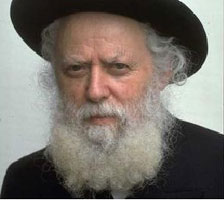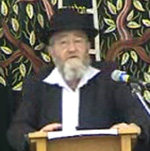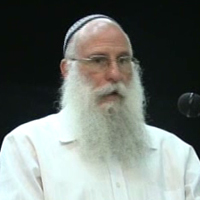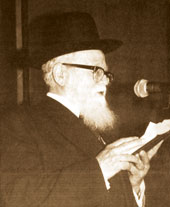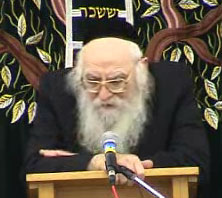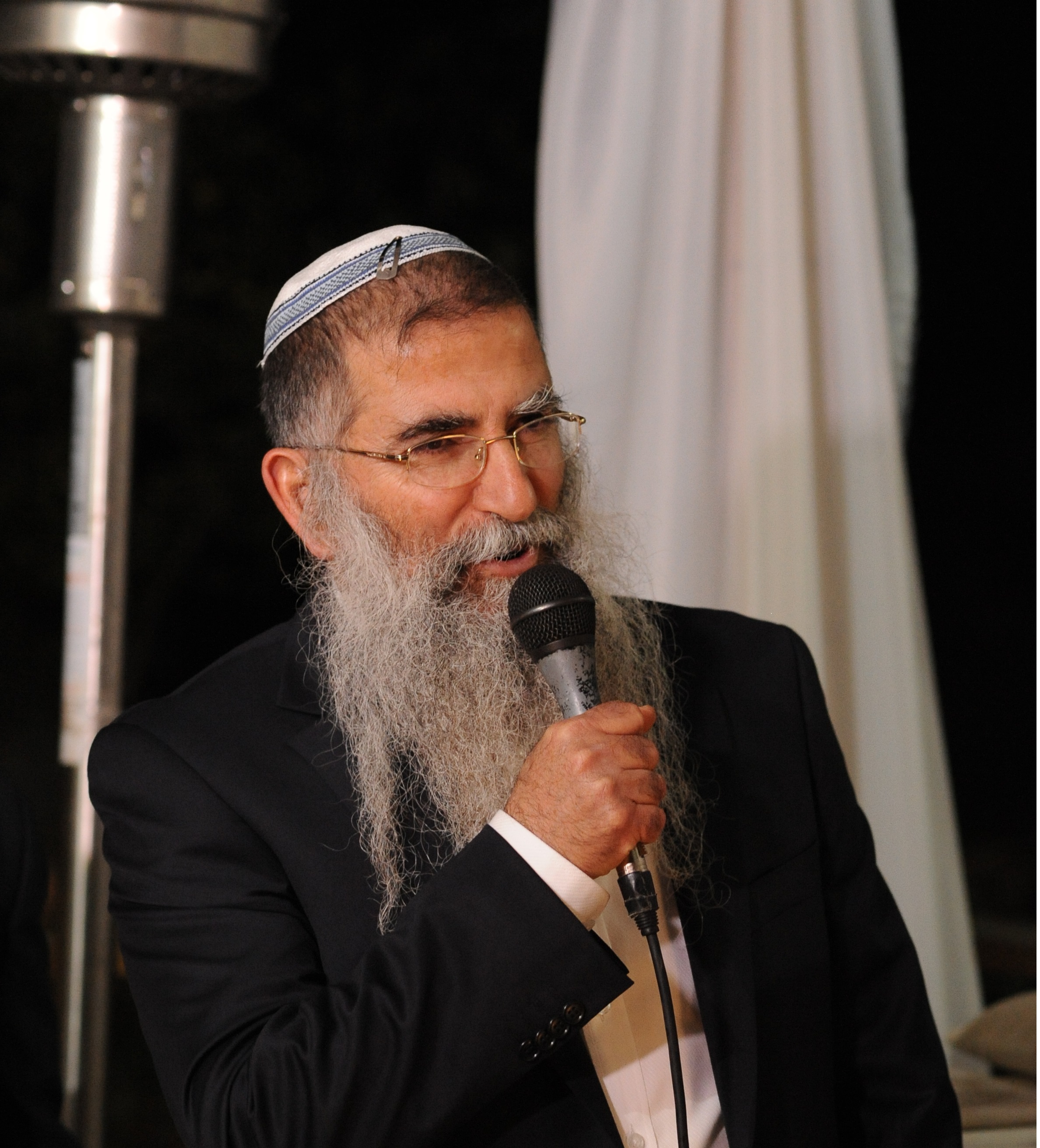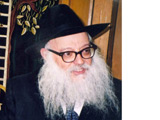Beit Midrash
- Shabbat and Holidays
- Laws of Shabbat
- The Melachot
- Torah Portion and Tanach
- Bereshit
- Bereshit
"Does every av melacha of Shabbos have tolados?"
Question #2: Sinews
"How are sinews like wool?"
Question #3: Dog Grooming
"Is it prohibited min haTorah to comb out my dog’s hair on Shabbos?"
Introduction:
The Mishnah in the seventh chapter of Mesechta Shabbos lists the 39 avos melachos, or major categories of work, prohibited on Shabbos. These melachos were all involved in the building of the Mishkan, which is a major factor in determining whether something is prohibited on Shabbos min haTorah.
There is another rule that each av melacha has at least one toladah (see Bava Kama 2a). A toladah is an activity that is prohibited min haTorah, and is derived from one of the avos melachos.
The Talmud Yerushalmi (Shabbos 7:2) tells us a fascinating story how the great amora’im, Rabbi Yochanan and Reish Lakeish, studied diligently this one chapter of Mishnah, the seventh chapter of Mesechta Shabbos, for three and a half years! As a result of their studies, they discovered 39 tolados for each av melacha. We find this incredible, since, for some of the avos melacha, finding more than one or two tolados is difficult. Several of the rishonim, particularly the Rambam, the Sefer Yerei’im and the Semag, endeavor to find tolados for the melachos. Yet, even with all their considerable efforts, we often find no more than one or two tolados for a particular av melacha.
There are a few reasons why it is important to know how many melachos there are and how to categorize them. One reason is because a person who negligently violated one of the melacha categories on Shabbos is required to offer a korban chatos as atonement. Of course, we have no way of fulfilling this today, but, soon, when the Beis Hamikdash is rebuilt, this mitzvah will again become incumbent upon us.
This requirement to offer a korban chatos is only if the violation was min haTorah. There are many conditions that need to be met for a melacha activity to be a Torah prohibition. For example, someone who performed a melacha activity, but did so in an unusual way, does not violate Torah law. This is sometimes referred to as ein darko bekach, not the usual way of performing the particular activity. At other times the Gemara calls this, batlah da’atan eitzel kol odom, since most people do not consider this the normal way (Shabbos 92b).
Here is an example of this rule. Rabbah bar bar Channah, quoting Rabbi Yochanan, said, "One who twists wool into thread on Shabbos while it is still on the back of an animal is in violation of three melachos, one for shearing, one for menapeitz (I will explain this melacha shortly), and one for spinning thread." Rav Kahana disagreed with Rabbah bar bar Channah, explaining that performing these activities while the wool is still attached to the animal is an atypical way of performing them. The Gemara then questioned Rav Kahana on the basis of a statement of an earlier authority, the tanna Rabbi Nechemyah, who noted that the women who spun the goat hair used for the Mishkan indeed spun the hair while it was still attached to the goats. Thus, if this was the way the melacha was performed when the Mishkan was built, it should automatically qualify as a melacha min haTorah! The Gemara retorts that, notwithstanding that the Mishkan was indeed constructed this way, Rav Kahana is correct that this is an atypical way to spin thread and therefore exempt from being a Torah violation of melacha. Since this method involves an unusually high level of skill, and, other than for the Mishkan, was certainly not the typical manner in which the melacha was performed, the way it was done in the Mishkan does not define what is a Torah violation of performing this melacha (Shabbos 74b).
Disentangling
The rest of this article will discuss the melacha called menapeitz, often translated as disentangling, combing or carding, but none of these terms explains the melachah adequately. When the Mishnah inventories the 39 melachos, it lists menapeitz in between melabein, which means either laundering or bleaching, and toveh, which is spinning fiber into thread.
As we see from several places in the Gemara, after wool and similar fibers were shorn from the animal and cleaned, they were combed or untangled in order to be able to continue processing them into cloth. The wool shorn from a sheep cannot be used immediately because it is filthy and very tangled. Cleaning it involves the melacha of melabein, which we will not discuss in this article. Menapeitz includes untangling the wool. Yet, as we will soon see, some authorities describe menapeitz in other ways, and, certainly, not all disentangling is menapeitz.
Tzadi or samach?
There is even a question as to whether the correct name for the melacha is menapeitz, with a tzadi at the end, or menafeis, with a samach, which is the way it is spelled by the Aruch. Rav Nosson ben Yechiel ben Avraham, was an early rishon who lived in Rome in the eleventh century. He was the head of a yeshivah located there, and authored a work called the Aruch, which is probably the earliest dictionary of Aramaic. In it, he quotes, at times extensively, various sources in the Gemara in which a term is used, translates the word into Hebrew and often explains the Gemara and other halachic concepts. The work, which is quoted by his contemporary, Rashi (see Shabbos 13b), and many times by Tosafos, had several addenda added to it in the centuries following, by such prominent poskim as the sixteenth-century Yerushalayim gadol Rav Menachem di Lunzano, and the nineteenth-century German dayan Rav Aharon Fuld. At times, only a seasoned reader can figure out which comments are from the original Aruch and which are additions from these latter figures. Other additions are from the seventeenth-century physician and philologist Binyomin Musafia, whose work was called originally Musaf Ha’Aruch, and from the renowned eighteenth-century Talmud chacham and editor Rav Yeshayah Pik.
Menapeitz in Tanach
Let us examine the root meaning of the word menapeitz in Tanach, and then see how the word is used in the context of the laws of Shabbos. The earliest use of the word is in parshas Noach (Bereishis 9:19), where the posuk says, "sheloshah eileh bnei Noach, umei’eileh noftzah chol ha’aretz, These are the three sons of Noach, and from them spread (the population) of the world." We also find the word meaning to shatter, such as in the pasuk, "ki'chli yotzeir tenapetzeim, You will shatter them like a potter’s vessel" (Tehillim 2:9). The word conveys the same idea in Shoftim (7:19), "venafotz hakadim asher biyadam, They smashed the jugs that were in their hands," and in Yirmiyohu (48:12) "venivleihem yenapeitzu, They will smash their barrels." We find it used in a more figurative sense in Yeshayohu (33:3), "mei’romemusecha noftzu goyim, From Your loftiness, nations have dispersed."
Furthermore, the Aruch provides three Talmudic references for the root nofatz: Shabbos 140, Avodah Zarah 7, and Chullin 72.
We now have a question on the Aruch. If the melacha on Shabbos is spelled with a samach, and there is clearly a word, both in Tanach and in Chazal, spelled with a tzadi,. why does the Aruch spell it with a samach? -- Are the letters samach and tzadi interchangeable, as we find occasionally? One could explain the variant spellings this way, although it is clear from the Talmudic references above that the Aruch himself understood that there are two roots with similar meanings. The root with a tzadi means to shatter, smash or disperse, whereas that with a samach means to disentangle.
Rishonim on the melacha
In his commentary to the Mishnah discussing the melacha of menapeitz, the Rambam (Shabbos 7:2) describes the melacha as beating wool with a stick. In the monumental recent work, Ma’aseh Oreg, which elucidates the various processes used in the days of Chazal to make cloth, Dayan Yisroel Gukovitski explains that after wool was washed and bleached, it was placed on a table and beaten with rods, which loosened the fibers and crushed any matter that prevented the wool from disentangling. This was an important stage in preparing the wool to be spun into thread or pressed into felt.
Rishonim other than the Rambam explain menapeitz in other ways. For example, in the context of the law of a nazir combing his hair, Rashi explains the word menapeitz to mean disentangling hair (see Rashi, Shabbos 50b; see Mishnah, Nazir 42a). In the context of the melacha menapeitz, Rashi understands this to mean picking apart and separating the clumped wool into fibers that can be properly spun.
Other authorities explain the melacha to mean combing the wool out with an iron comb (Meiri, Shabbos 73b; Chayei Odom 23:1). This is a later step in the processing of the fibers to make them ready for spinning into thread. By the way, Rashi (Bava Basra 19a s.v. Tzipei) also describes the act of menapeitz as combing, although that context is not discussing the laws of Shabbos.
It is unclear that there is any halachic dispute among these different approaches. They may simply be describing different stages in the melacha, and that the melacha includes any or all of these processes.
Carding
Some late commentators translate menapeitz as carding, because the word card as a verb
means to disentangle fibers. (The word card can also mean the specific brush used to disentangle fibers prior to spinning them.) This seems to fit Rashi’s old French word, carpir (Shabbos 73a, see Avnei Neizer 170:8 and Targum Hala’az #1618).
However, at this stage we are faced with a question asked by one of the great late acharonim, the Avnei Neizer (170:9). There are two steps involved in preparing clean fibers so that they can be spun into thread. First, one disentangles the wool; then, one combs the fibers together evenly so that they can be spun. Since we now know that menapeitz means disentangling, why isn’t the second step, combing it into a form that can be spun, a separate melacha? In other words, there should be two melachos – one called menapeitz and another called soreik, combing – between the melacha of melabein, which is laundering or bleaching, and the next melacha, toveh, spinning.
The Avnei Neizer (170:9) answers that since this is all one process, it is all included as one melacha, notwithstanding that it can be subdivided into two steps. He then asks why the melacha is called menapeitz and not soreik, combing, which is the final stage? To this he answers that combing is performed with an implement, whereas the disentangling can be performed either with an implement or by hand. The Mishnah called the melacha menapeitz so that we would realize that disentangling by hand is also considered the primary melacha.
Menapeitz times two
Now that we understand the basics of this melacha, we will discuss some of its details.
According to some authorities, one can violate the melacha of menapeitz twice on the same material. Certain methods of processing wool involve combing out the material and then soaking it in a special solution, so that it will absorb dye better. This soaking causes the wool to clump again, and one needs to comb it out a second time. According to the Maasei Rokei’ach, if both of these actions were performed on Shabbos, this second combing would be another Torah violation of the melacha of menapeitz (Hilchos Shabbos 9:12).
Sheep and other animals
Although the prohibition of shatnez applies min haTorah exclusively to the wool of sheep and not to the hair or wool of other animals, such as goats, camels, llamas and rabbits (see Kel’ayim 9:1), all opinions agree that menapeitz applies to the wool of all animals that may be used for clothing. By the way, the difference between wool and hair, the two English words that describe what grows on an animal, is that wool is hair that is soft and therefore suitable for clothing. Some goats, such as cashmere and angora varieties, produce soft wool, whereas others produce coarser hair, suitable for making into burlap sacks but not into clothing.
Carding coarser material unsuitable for cloth manufacture, but usable as burlap, also violates menapeitz.
Linen and cotton
There appears to be a dispute among rishonim whether the melacha of menapeitz applies min haTorah to textile materials that grow from the ground (plant-based), such as cotton, jute, or flax (which is processed into linen). Rashi seems to hold that menapeitz applies only to materials that do not grow from the ground (Rashi, Shabbos 73b; see also Meiri ad locum), whereas the Rambam (Hilchos Shabbos 9:12) and the Semag rule expressly that menapeitz applies to all materials. The Chayei Odom rules that menapeitz applies also to plant-based textiles.
Even according to those who accept the Rambam’s opinion that menapeitz applies to plant-based textiles, there is a further dispute whether beating a flax plant to soften and loosen its fibers violates menapeitz or tochein, grinding. In his commentary on the Semag, the fifteenth-century posek, Rav Isaac Stein, rules that beating flax violates the melacha of menapeitz. On the other hand, the Maharshal, in his comments on the Semag, disagrees, contending that menapeitz must involve disentangling and not simply beating.
Cottonseed
According to several rishonim, combing out cotton, which removes the seeds, violates a different melacha, dosh, threshing, because it separates the usable textile material from the seeds, which are unusable as clothing (Rashi, Shabbos 73b, Ran and Meiri ad locum). (Cottonseed is crushed for its oil. At the time of the Gemara, cottonseed oil was used as inferior kindling oil [see Rashi, Shabbos 21a s.v. Mish’cha]. Today, it is a source of cooking oil, used, for example, in the production of potato chips.) The melacha of dosh is violated when one breaks the natural, physical connection between two items that are dissimilar in their use, thus creating a product that can be used easily. For example, threshing breaks the connection between the kernels and the chaff, thus making the kernels usable; squeezing separates the juice or oil from the fruit. Since the Chayei Odom ruled like the Rambam that menapeitz is applicable to plant-based textiles, he concludes that combing out cotton or similar textiles, thereby removing the seeds while preparing the fibers for spinning into cloth, violates two melachos, dosh and menapeitz. However, the Bris Moshe disagrees (Commentary to Semag 65:134). It is beyond the topic of this article to explain the significance of an action violating two different melachos.
Sinews
Let us return to our second question, "How are sinews like wool?"
The halacha requires that Sifrei Torah and tefillin be sewn by a strong, very special type of "thread" made of sinew. The processing of these sinews so that they can be used as thread is also considered an act of menapeitz (Rambam, Hilchos Shabbos 9:15). The way these "threads" are processed is as follows: The thick sinews of an animal are dried and then smashed with a hammer, which makes them form a mushy mass, somewhat similar to the way wool appears after it has been carded. The beaten sinew can then be spun into thread, which constitutes the melacha of toveh.
The Avnei Neizer (170:6) asks why the hammering process that precedes the spinning of the giddin (sinews) is not a violation of a different melacha, tochein, grinding, since one is thereby pulverizing the dried sinew. He concludes that, indeed, both melachos are violated, tochein and menapeitz. The Rambam simply told us that the spinning is a toladah of menapeitz, but did not discuss the fact that one violated Shabbos already when hammering the sinew.
Combing hair
While showering, many people use hair conditioner to facilitate combing the tangles and knots out of their hair. Realize how much more difficult this is for a sheep, whose hair is much curlier, and it has been quite a while since it last brushed its hair! And it certainly didn’t use conditioner!
The halachic authorities discuss whether a woman can disentangle her hair on Shabbos, all ruling that this is permitted provided she does not do it in a way that will be a psik reisha whereby she definitely pulls out hair (end of Orach Chayim, 303). Pulling out hair is forbidden because of a different melacha, gozeiz, shearing. However, if, as we explained, any type of disentangling involves the melacha of menapeitz, why is disentangling hair not forbidden as menapeitz?
The answer is that the melacha of menapeitz is preparing material so that it can be spun into thread or made into cloth (Avnei Neizer, Orach Chayim 170:2, 171; Chayei Odom). Unless a woman is planning to spin her hair into cloth, it will not be prohibited as menapeitz.
Dog grooming
Thus, we can now address the third of our opening questions: "Is it prohibited min haTorah to comb out my dog’s hair on Shabbos?"
Unless one intends to use its hair as a textile, there is no melacha of menapeitz involved. It is presumably still prohibited because of muktzah, and because of a concern that someone will likely pull out hairs while combing.
In conclusion
Rav Samson Raphael Hirsch (Shemos 20:10) notes that people mistakenly think that work is prohibited min Hatorah on Shabbos so that it be a day of rest. He points out that the Torah does not prohibit doing avodah, which connotes hard work, but melacha, activities or actions which bring purpose and accomplishment. Shabbos is a day that we refrain from constructing and altering the world for our own purposes. By refraining from our own creative acts on Shabbos, we allow Hashem’s rule to be the focus of creation (Shemos 20:11).
This Shiur is published also at Rabbi Kaganof's site

Sewing on Shabbos
Rabbi Yirmiyohu Kaganoff | Adar I 16 5779

Food Coloring and Shabbos
Rabbi Yirmiyohu Kaganoff | Tishrei 25 5782

Removing Hair from a Necklace
Rabbi Daniel Mann | Sivan 30 5780


